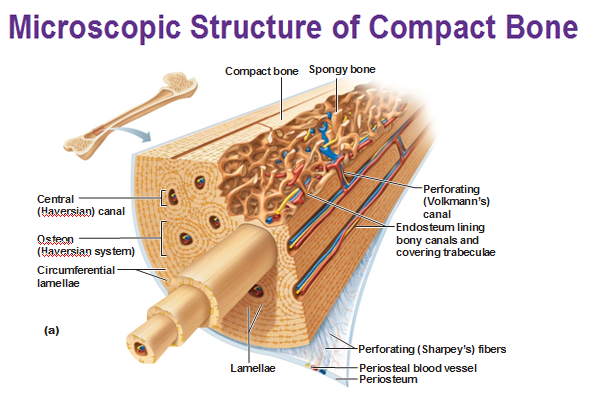
Which letter indicates bone that is not arranged in osteons and is called spongy or trabecular bone?
E
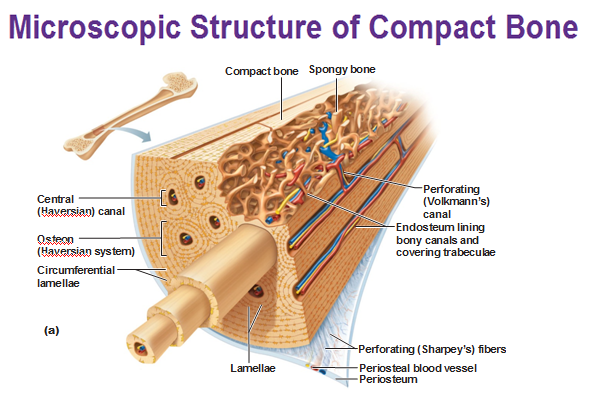
Which letter indicates lamellae located outside the lamellae belonging to the osteon?
B

Which letter indicates the collagen fibers of the periosteum known as the perforating, or Sharpey's, fibers?
C
Which type of fracture tends to occur where cartilage cells are dying and the matrix is calcifying?
A) greenstick
B) epiphyseal
C) spiral
D) comminuted
B
A large, multinucleate cell with a ruffled border is an
A) osteoclast.
B) adipocyte.
C) osteocyte.
D) osteoblast.
A
Which bone cell type secretes hydrochloric acid?
A) osteoblast
B) osteoclast
C) osteocyte
D) osteoprogenitor
B
An osteon is composed of
A) a cell body and a long, threadlike extension.
B) cartilage.
C) layers of bone lamellae surrounding a central canal.
D) interstitial lamellae.
C
Most bone disorders are characterized by bone loss; which of these diseases is characterized by excessive bone deposition?
A) osteomalacia and rickets
B) osteomyelitis
C) osteoporosis
D) achondroplasia
E) Paget's disease
E
An incomplete, splintery fracture that occurs in the flexible bones of children is a(n) ________ fracture.
A) greenstick
B) depressed
C) comminuted
D) epiphyseal
A
Which of the following statements about woven bone is false?
A) It is the same as spongy bone of adults.
B) It contains no trabeculae.
C) It is characteristic of the development of embryonic flat bones.
D) As fetal development progresses it is replaced by comapact bone at the periphery.
B
The cartilage of the epiphyseal plates is organized into zones based upon the unique processes occurring in each of these regions. Identify the correct sequence of these processes, from the epiphyseal end toward the diaphysis.
A) calcification — hypertrophy — growth — resting — ossification
B) ossification — calcification — hypertrophy — growth — resting
C) resting — hypertrophy — growth — calcification — ossification
D) hypertrophy — growth — resting — calcification — ossification
B
Which of these is a skeletal disorder resulting from mutations in a gene that leads to the most common form of dwarfism?
A) osteomalacia and rickets
B) osteomyelitis
C) osteoporosis
D) achondroplasia
E) Paget's disease
D
The continual process of bone resorption is under the control of the
A) parathyroid gland.
B) pancreas.
C) pituitary gland.
D) adrenal gland
A
The kneecap, or patella, is an example of
A) a flat bone.
B) an irregular bone.
C) a sesamoid bone.
D) calcified cartilage.
C
Which of these diseases is more prevalent in children, and was exceedingly common in the United States and other industrialized nations before vitamin D was added to milk?
A) rickets
B) osteomyelitis
C) osteoporosis
D) achondroplasia
E) Paget's disease
A
A hormone that increases the bone-degrading activity of osteoclasts is
A) an androgen (male sex hormone).
B) an estrogen (female sex hormone).
C) thyroid hormone.
D) parathyroid hormone.
D
Which of the following is not a function of the bony skeleton?
A) support and protection
B) storage of parathyroid hormone
C) transmission of muscular forces by acting as levers
D) production of blood cells
B
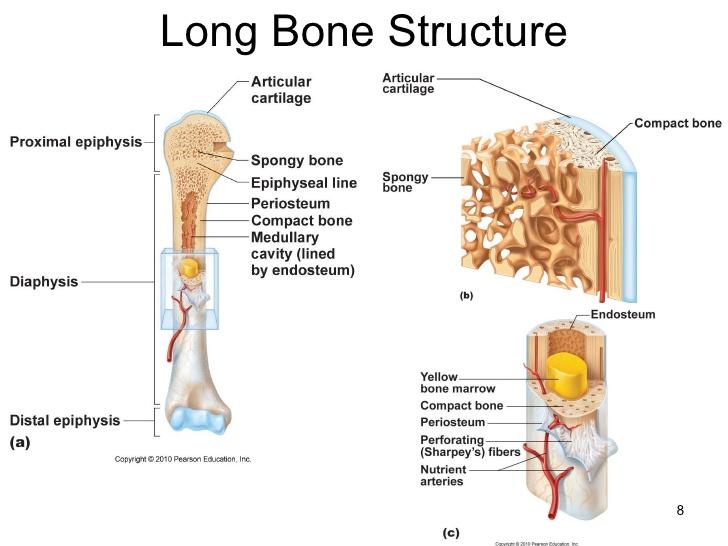
Which letter indicates the region known as the epiphysis?
B
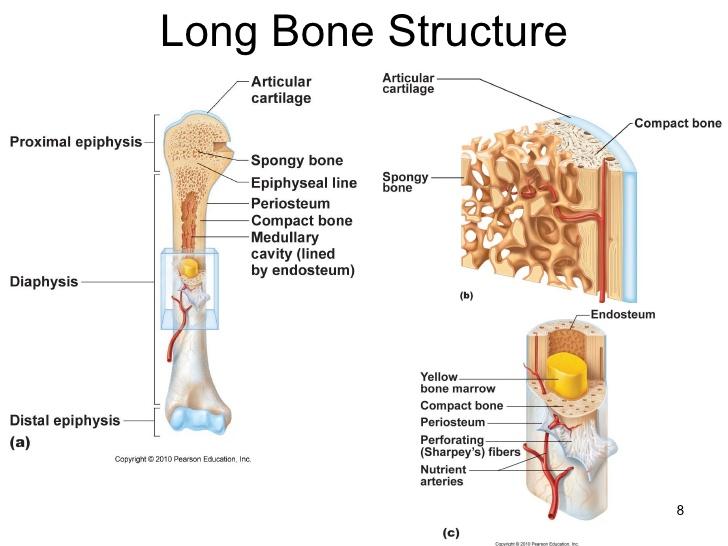
Which letter indicates the region of the long bone comprised of a network of trabecular plates?
A
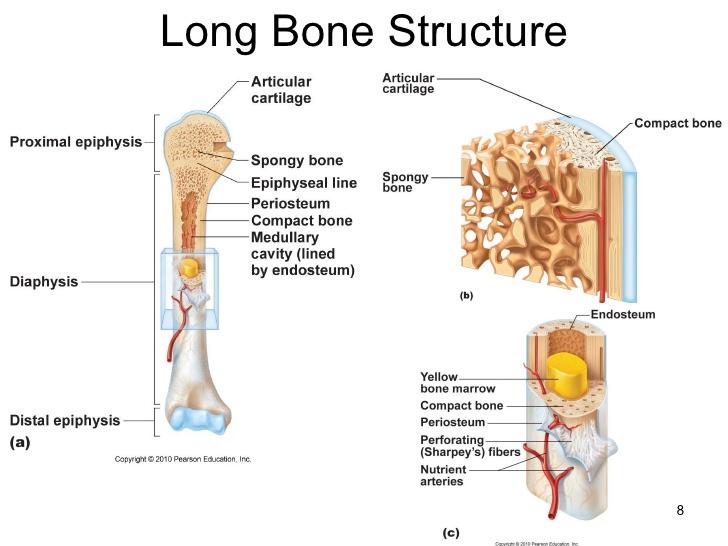
Which letter indicates what is known, in a growing juvenile, as the epiphyseal plate?
C